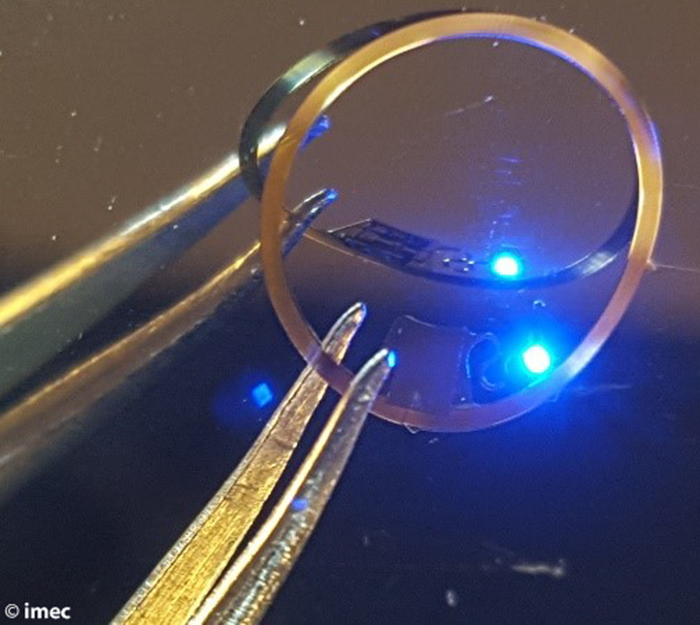Belgium’s leading research and innovation hub imec and Ghent University and Japanese contact lends manufacturer SEED Co. Ltd. Have developed a contact lens with an integrated LED light, including an ultra-thin silicon microchip, radio‐frequency (RF) antenna for wireless energy transfer, and stretchable thin‐film interconnections.
Read more Soft Contact Lens Can Monitor Glucose, Medical Conditions and Deliver Drugs
Unlike traditional wearable contact lenses, which are made of non-water-containing material, this new device is made of hydrogel-based material. This new development paves the way for unique applications such as lenses with sensors and/or drug-delivery systems for the treatment of different eye disorders, at the congenital, post-surgery or trauma level. The main advantages of such devices are their low invasiveness level and continuous monitoring in an almost imperceptible manner, said a press release.
“Smart contact lenses could offer adaptive optical correction for presbyopia patients. They can also offer a solution for people with iris deficiencies, such as aniridia or coloboma. As reported in our research, we have prepared the technological platform to integrate sensors that continuously or regularly monitor bodily parameters such as the concentration of certain substances in the tear fluid. The sensors can be powered and also read out wirelessly. Our partner, SEED, is presently assessing which parameter would be the most important for a first use case,” Prof. Herbert De Smet of Ghent University and imec told MedGadget.

About 130 million people worldwide wear contact lenses, mainly to correct their vision. Now, with electronic systems getting ever smaller and with the possibility of having electrical power on-lens, it becomes feasible to integrate a variety of transducers (i.e. physical, biochemical, etc.) into a lens. This is interesting for diagnosing and treating ocular diseases.
The lens needed to be oxygen-permeable, thin, wrinkle-free, and comfortable to wear, while maintaining electrical functionality. The researchers optimized the lends significantly to achieve these properties.
Researchers from CMST, an imec research group at Ghent University, along with SEED Co., Ltd., demonstrated the new device, which showed a semi-passive smart lens with blue LED light powered by an RF coupling. Besides power transfer, the RF link can be used to calibrate the integrated transducers and reading the sensors out into a handheld device for further post-processing.
Read more NovioSense Announces Phase 2 Positive Clinical Trial Results of Tear Glucose Measurement Technology
“Flexible and stretchable electronics hold a lot of promise for medical applications,” explains Andrés Vásquez Quintero, imec researcher and professor at UGent. “They can be integrated in intelligent clothing, and even – when combined with highly miniaturized electronics – in smaller devices such as contact lenses. Major challenges have to be overcome to make a truly autonomous smart lens which is comfortable to wear and stable for a few days or even weeks. The integration of a LED light in a semi-passive RF wireless platform is the first important step towards a device that will change the life of many.”












